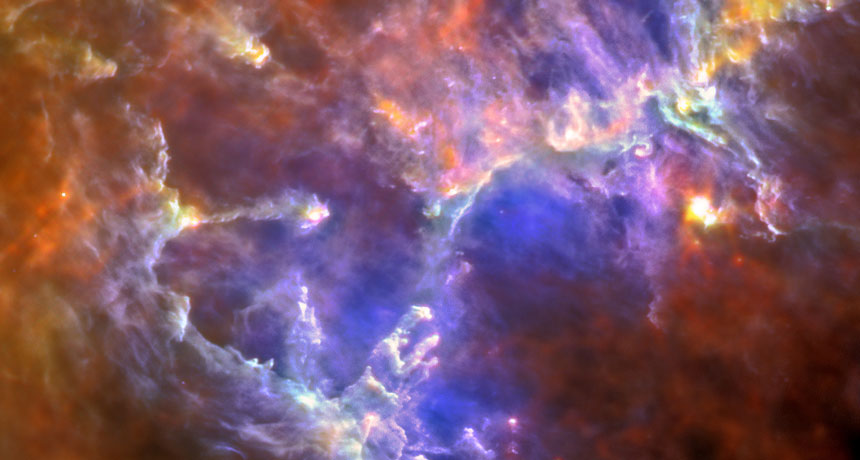The sugar that makes up DNA could be made in space
Lab experiments simulating the iciness and radiation in a star nursery created deoxyribose

ORIGIN STORY The frigid and radiation-rich conditions in stellar nurseries like the Eagle Nebula, shown here in an image from the European Space Agency’s Herschel Space Telescope, could have created the sugar that makes up DNA.
Hill/SPIRE/PACS/Herschel/ESA, Motte, HOBYS Key Programme Consortium, Boulanger/XMM-Newton-SOC/ EPIC/ XMM-Newton/ESA